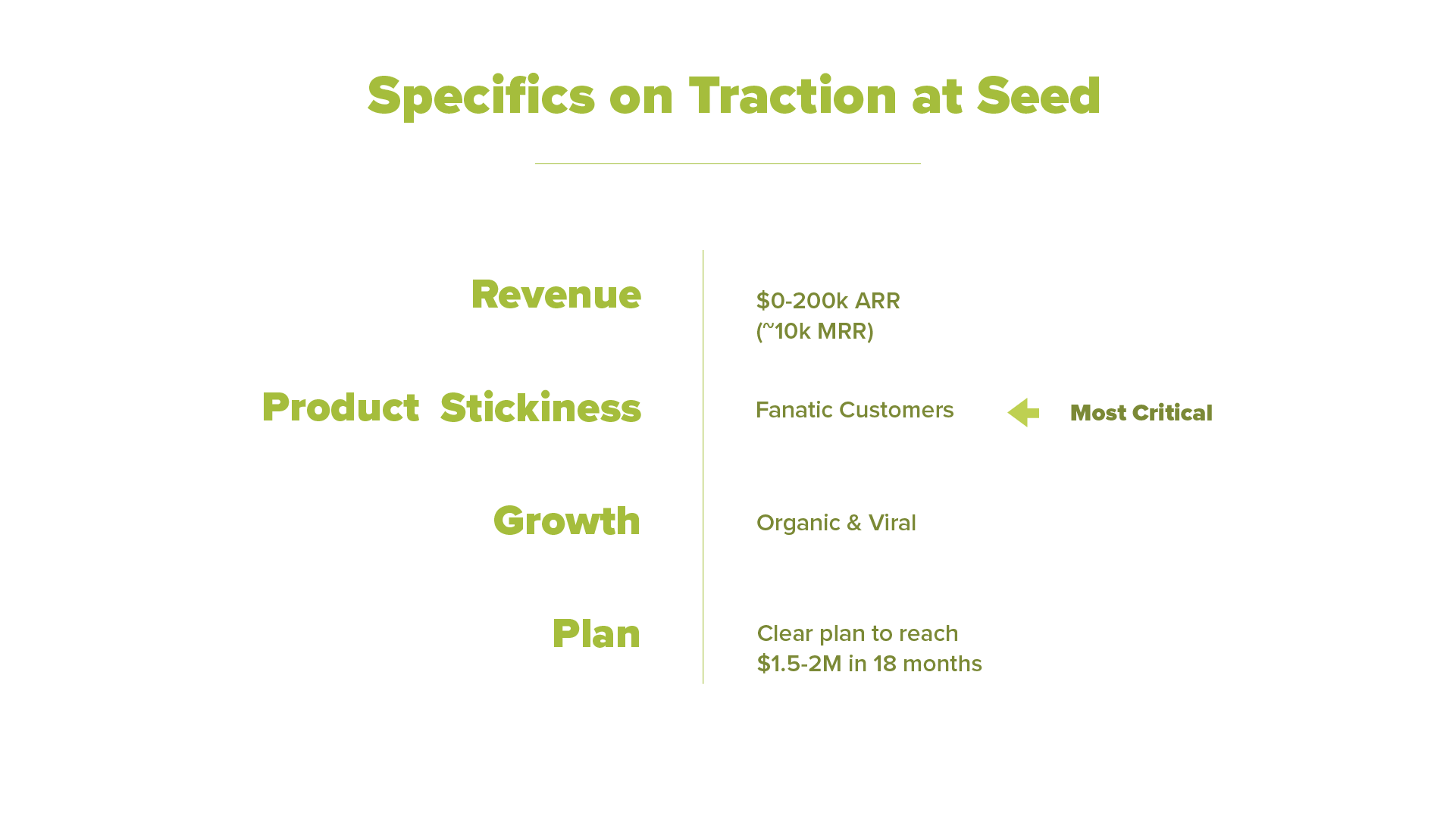
This post is Part 3 of our four-part series on What It Takes To Go from 0 to 1.
To review: at 0, you have a big idea. At 0.5, you have a product that you, as the founder, can sell, and you’re seeking seed stage financing.
What we’re looking for here is product love. For us, all that matters is — do people absolutely love this product? Is there a group of people out there who can’t live without this product?
Your product needs to be at least 10x better than anything out there, and ideally, you can show us that this group is willing to pay for it. To us, it doesn’t matter at this point exactly how much they’re willing to pay, and to some extent, even if they’re not willing, it could still be okay. We really want to see the love most of all.
Now, we do use some metrics and signals to try to determine that level of “love,” and it actually has nothing to do with how much revenue you have, nor acquisition.
Qualitatively, a good rule of thumb is that when a company is at 0.5 stage, they are no longer changing their website (or sales Powerpoint, or app) to acquire and retain a new customer. They’ve found a value proposition that works.

For a SaaS company, we generally want to see some very happy customers.
For a consumer company, it’s all about retention.
If you’re building an app, for example, you might be tempted to put your app out there and get as many downloads as possible. Maybe you’ll think about buying ads to juice those download numbers. To us, none of it matters unless you’re retaining the user. From our perspective, buying ads to inflate your downloads is just throwing money down the drain.
The top 10 apps, all of which are huge companies, retain their users at 60% after a year. The crappy ones retain under 10%. It goes to show that the hard part of a consumer app is to keep somebody using it for a long time. If you can do it, it’s a good sign that you’ve got that product love we’re looking for.

Another important signal we look at for consumer businesses is your retention of super fans—people who are dying for your product. A good example of this was Pinterest. Early on, Pinterest users were on the site all the time and they were obsessed.
So, we’re not just looking at retention of the average user, but also retention of those super fans. We want to see how much those super fans love you.


To navigate this stage, you’ll need a rapid experimentation mentality, cycling through as many new hypotheses as possible to land on the right value proposition. Make your operations scrappy and fast. Build and kill features, get to the simplest MVP possible.

To sum: be fast and listen to the data. Do not fall for fake signals. Remember the only real thing that matters is: do people (truly) love your product?